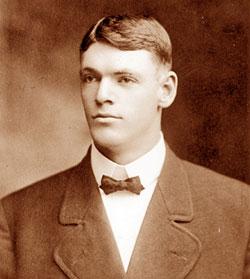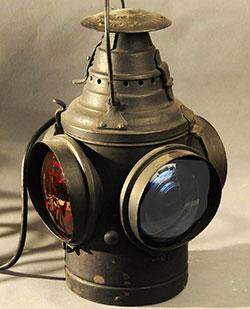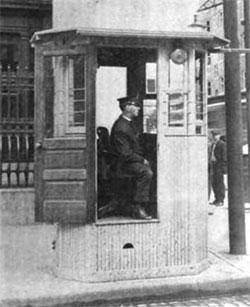
Date:
The Dawn of a New Era: The Invention that Re-Defined Road Safety
When the automobile was invented in the 19th century, it changed transportation forever. People could go wherever they wanted, whenever they wanted, faster than they ever could before. As cars became more ubiquitous, however, so did injuries and deaths from car accidents. One of the biggest issues was intersections, where cars, horses, and pedestrians tried to move through simultaneously. The solution was something that we’re all used to seeing today – the traffic light.
From Gas Lamps to Electric Signals: The Evolution of Traffic Lights

Lester Wire (1908)
Image: findagrave.com
The traffic light has been around since the 1860s, when British inventor J.P. Knight came up with the idea to have a gas lamp signal to control traffic outside the House of Parliament. By the early 1900s, some cities around the United States had installed poles with signage that could be turned to let drivers know when to stop or go. Police officers often stood at busy intersections to direct traffic, which became increasingly dangerous. Salt Lake City police officer Lester Wire created a signal using red and green electric lights that could be controlled by someone on the side of the road, reducing the danger for officers. Though his invention didn’t take off at first, his idea eventually spread around the country.
Signal Lanterns: Illuminating Hazards in the Early Days of Road Safety

Signal Lantern c. 1913-1920 (FI Cat.#73-151)
Dressel Lamp & Signal Co., Arlington, NJ
Originally designed for use by railroads, this was probably used (c.1913-1920) by highway contractors, utility companies, and municipalities rather than the railroad. Signal lanterns were used to mark construction sites and roadwork, and generally warn night-time drivers of road hazards. Red meant “stop,” while blue would often signal equipment that was undergoing repairs and shouldn’t be boarded.
In conjunction with these early traffic signals, there were other forms of signaling systems in use at the time. Signal lanterns, like the one by Dressel Lamp & Signal Co., played a critical role in nighttime road safety between 1913 and 1920. Originally crafted for railroads, these lanterns found a home with highway contractors, utility companies, and municipalities, aiding in the demarcation of construction sites and road works, and ensuring that drivers were warned of potential hazards during the nighttime.
The Birth of Modern Traffic Control: Innovations of the Early 20th Century

Traffic officer booth, Cleveland
The American City & County (September, 1915)
In 1914, electric traffic lights were installed at one of the busiest intersections in Cleveland, using a system designed by James Hoge. An officer in a booth could flip switches to turn lights suspended over the intersection from red to green and back again. There was just one problem – lights would change with no warning for drivers, giving them no time to react when it turned red. William Potts, another police officer, came up with the idea of adding a third light, alerting drivers that the signal would soon turn red. After witnessing a bad traffic accident, African American inventor Garrett Morgan came up with a similar idea, and in 1923, he patented his design for a T-shaped signal with three lights. This would be a precursor to the traffic lights we know today.
Standing the Test of Time: The Traffic Light's Continued Contribution to Safety
Over the years, further developments, like a countdown timer for pedestrians and audio signals for the visually impaired have been added, but the basic idea of the electric traffic light has remained the same – using simple signals to make cars safer for both drivers and those around them.


